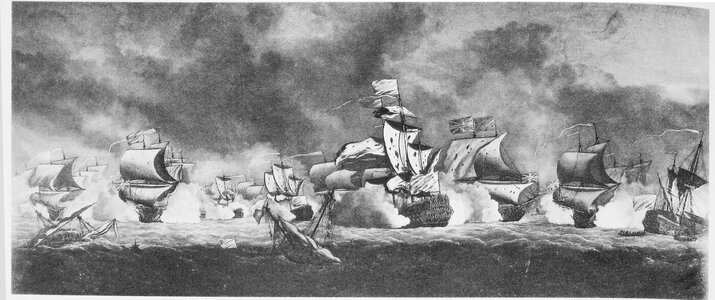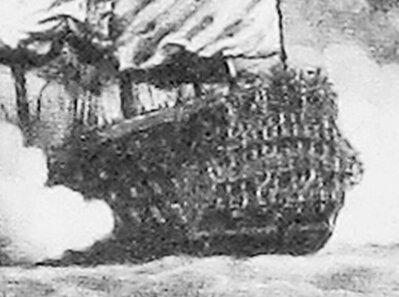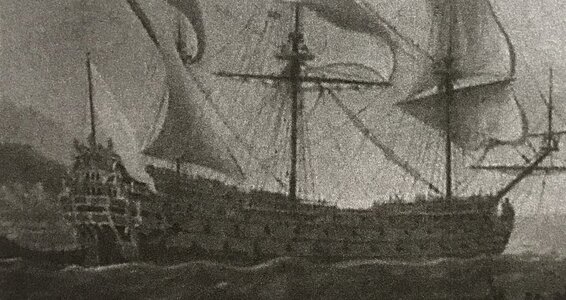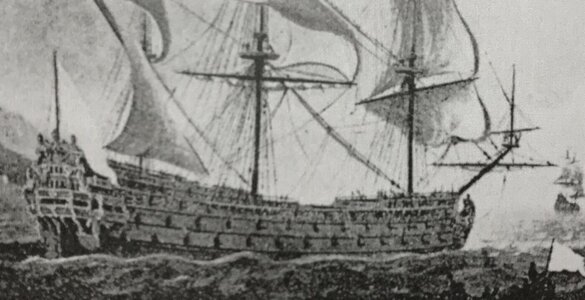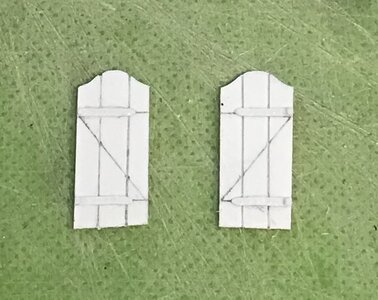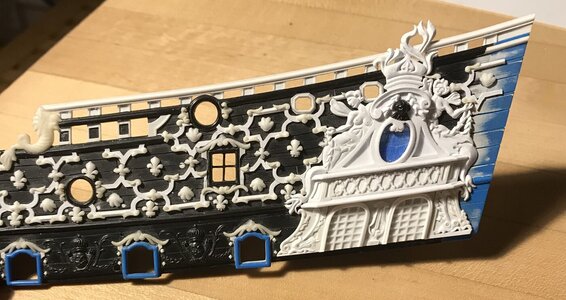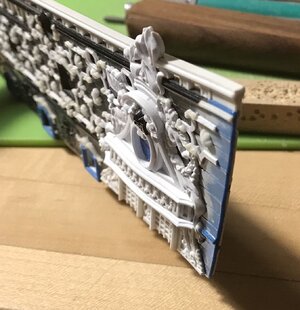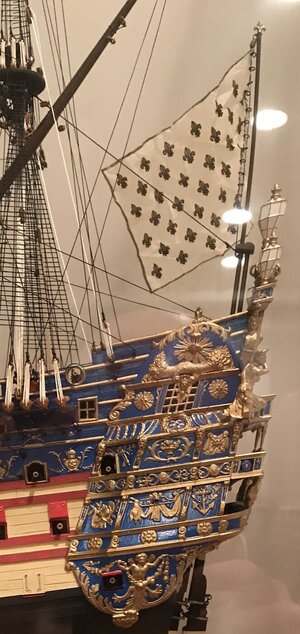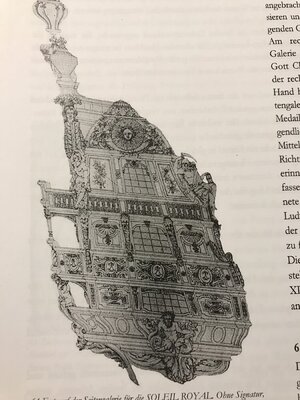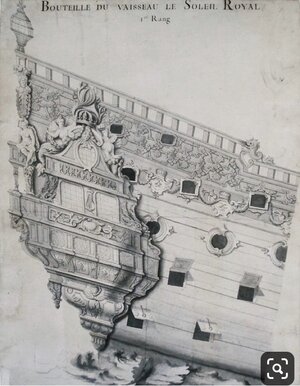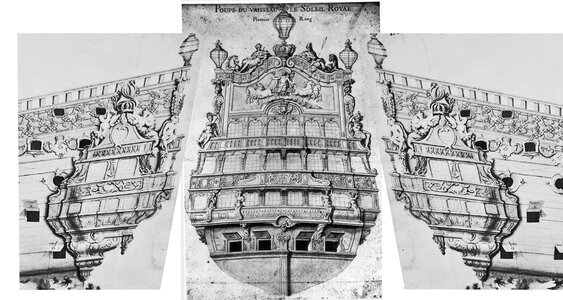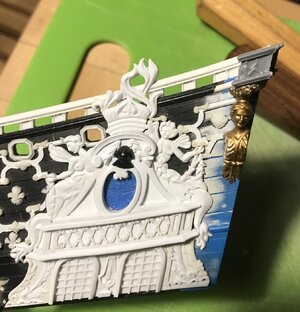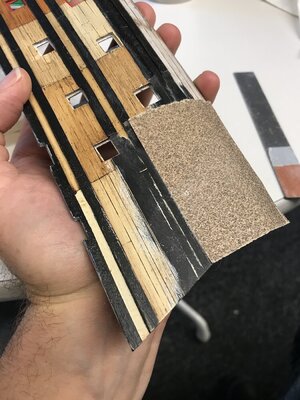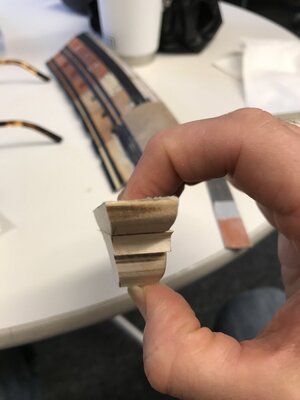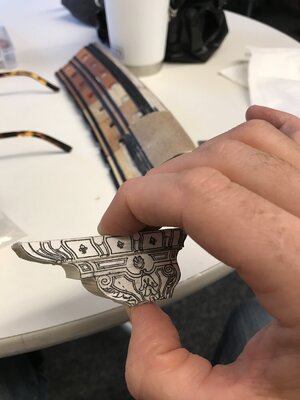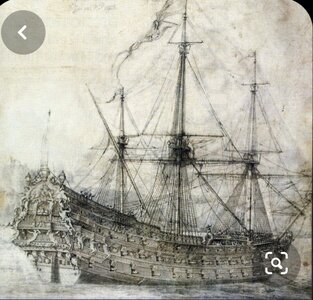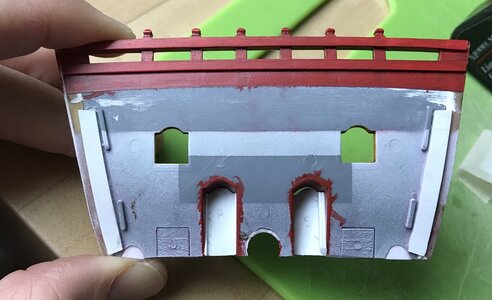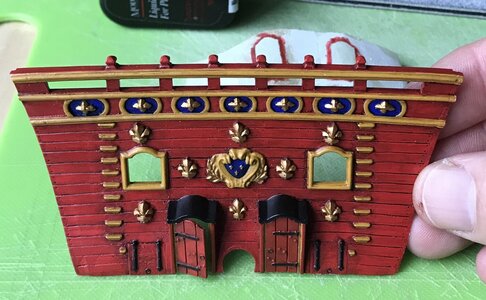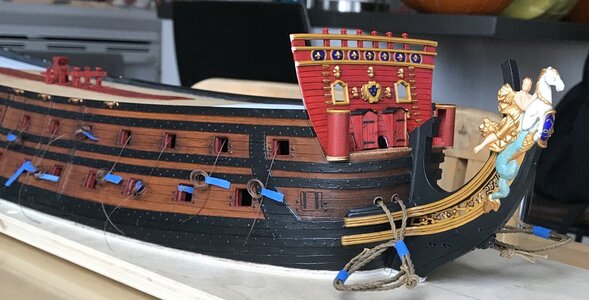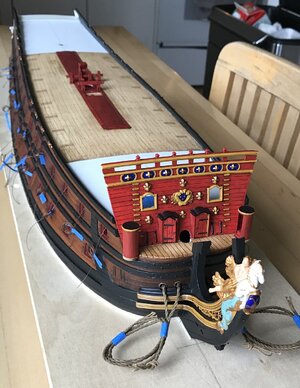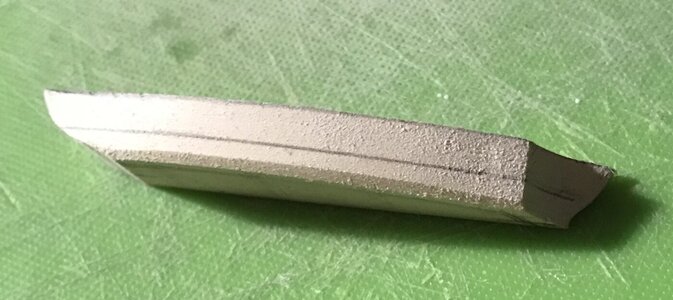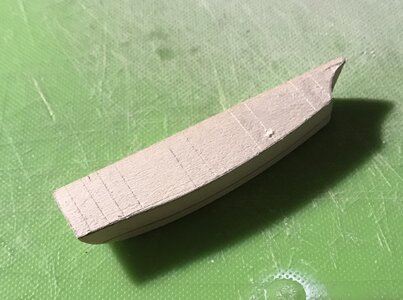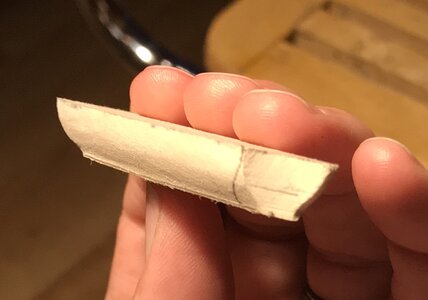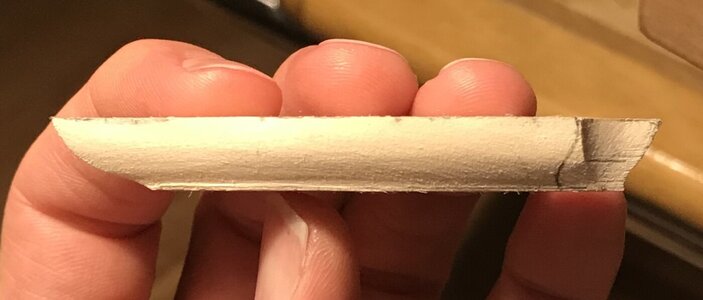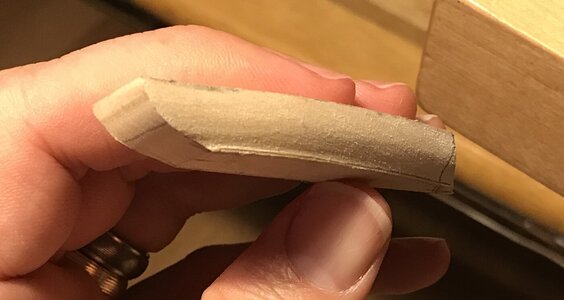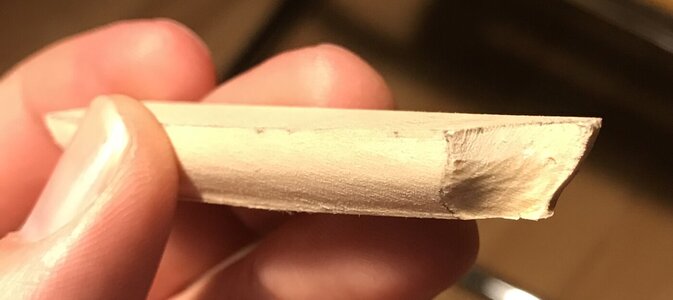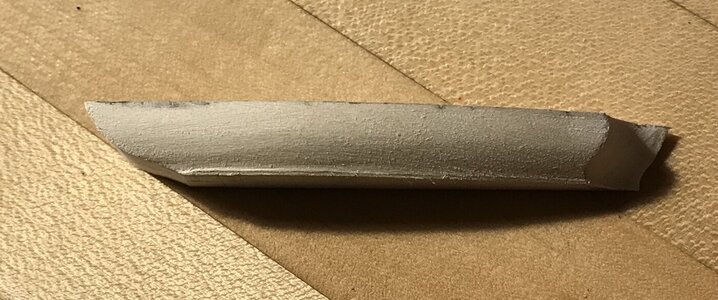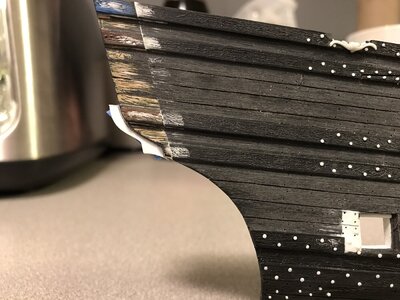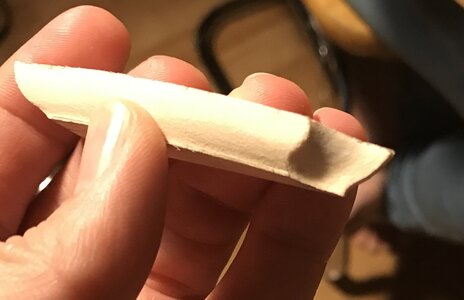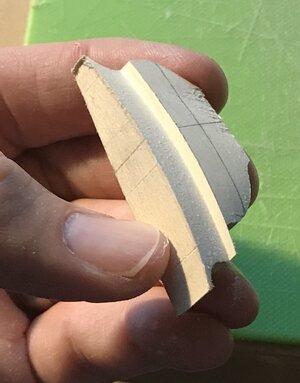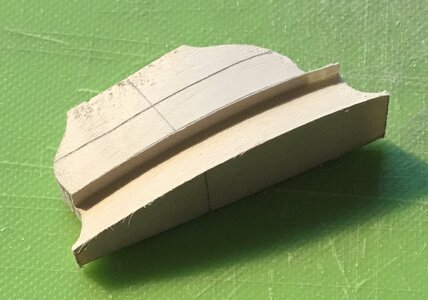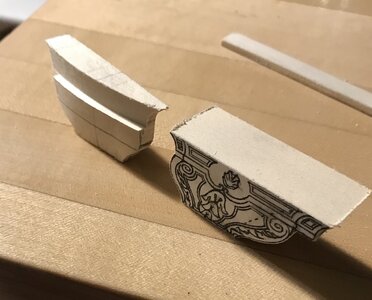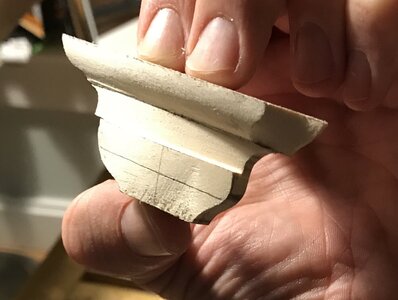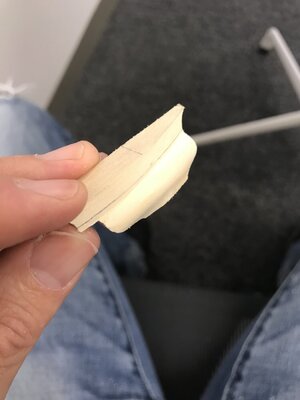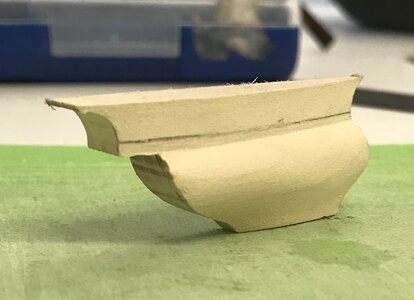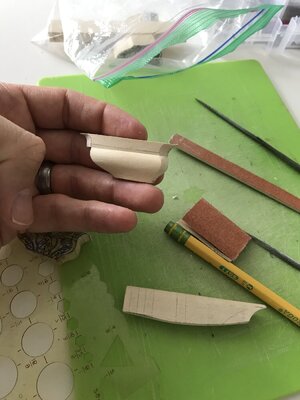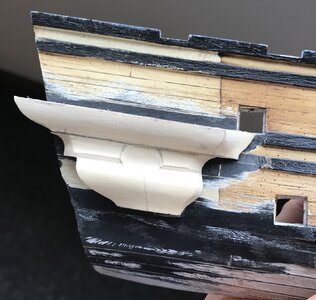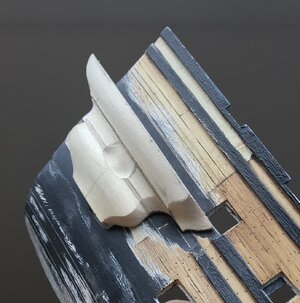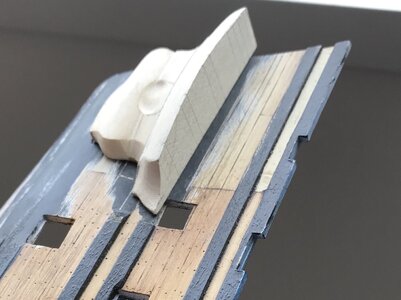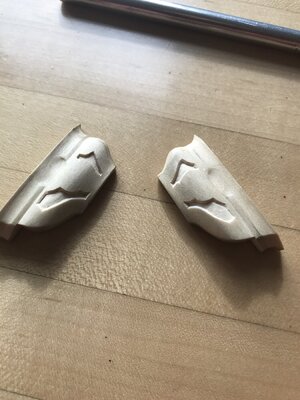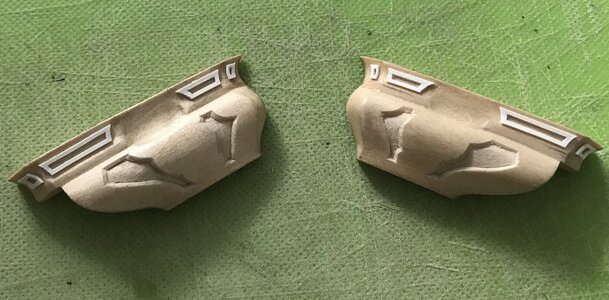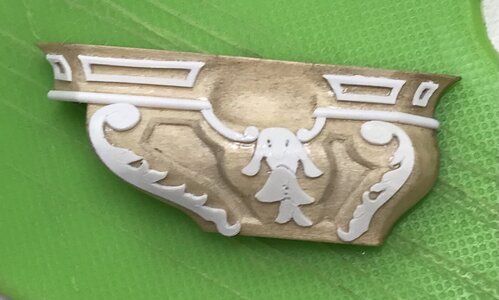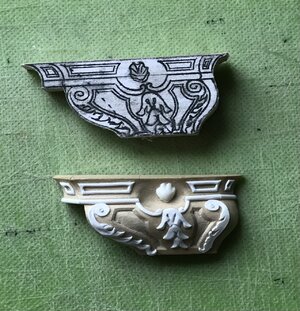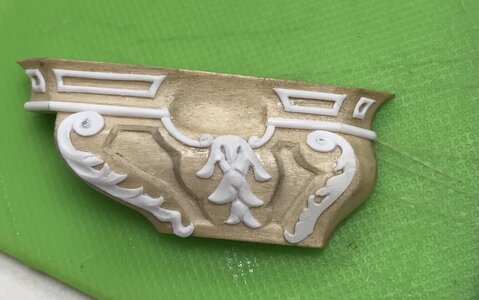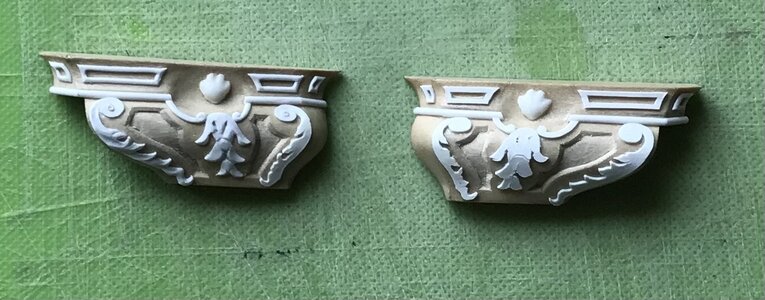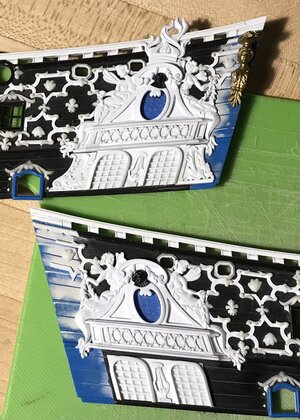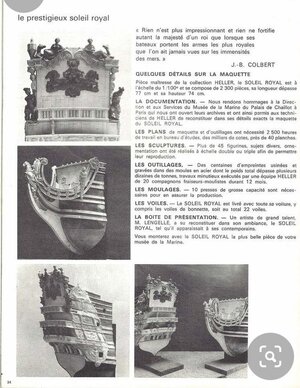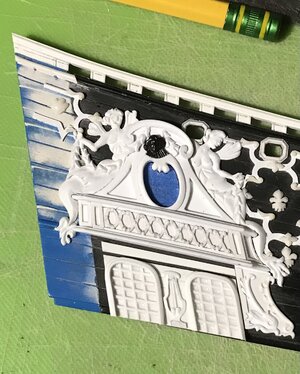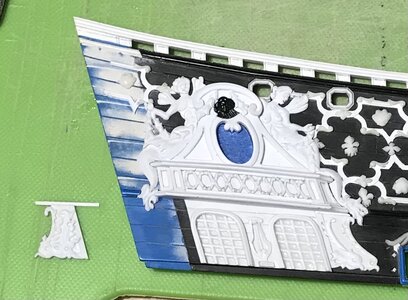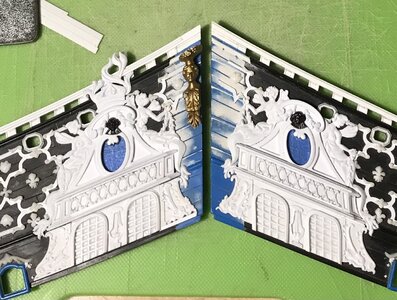So, the upper finishing of the amortisement has been straight-forward but surprisingly labor intensive.
This particular photo of Tanneron’s damaged model of L’Agreable is so instructive because it provides so much information about the fabric of his construction, as well as the shaping cues for the upper finishing of the amortisement:
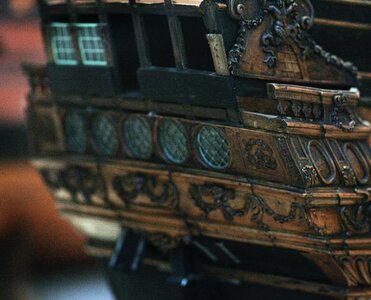
My ambition, always, is to attempt to capture some sense of the magic that makes Tanneron’s models so impressive. Toward that end, it’s a process of layering details with all of the care of execution that one can muster.
As has been my method, the upper finishing is made up of a series of laminations: a base layer of 1/32”, a middle 1/16” layer, and a top layer of 1/32”.
I toyed with the idea of using Bondo fills to fair panel recesses at a continuous depth. I did not think the Bondo would adhere well enough to the plastic to withstand the slight flex of fixing the part in place. Conventional model putty would be too brittle. In the end, I decided that the 1/16” layer was deep enough to create a sense of shape without having to go through undue effort for minimal gain. I think it worked out pretty well.
A montage:
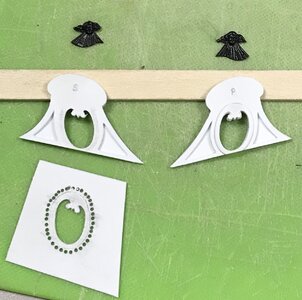
Given my struggles to carve good faces, I decided to extract Louis’s radiant head from the same place on the kit’s stock quarter galleries.
I wasn’t sure, early on, just how much space I would have left-over, after the bellflower garlands were in place, so I left the heads oversized for the time-being.
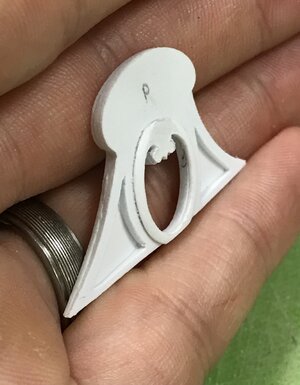

You can see the subtle shaping of the 1/16” layer, above, as well as the slight rounding of the final window framing.
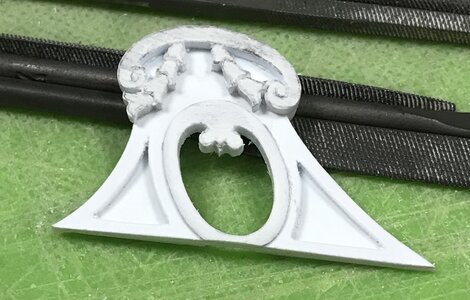
The garland and cornice were a separate 1/16” layer. Just as they are, above, they would be fine, if I decided to stop there. Attention to detail is everything, though, so I took the shaping a little further:
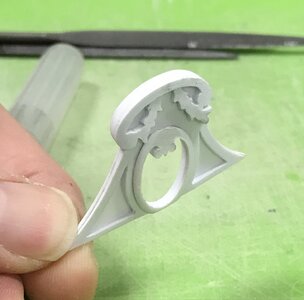
The garland diminishes, in depth, as it rises to the cornice, and the cornice, itself, is now tapered in a gentle arc from its center to its ends; this small detail helps to accentuate the convex shape of the windowed center, below.
I coved the inner surface of the cornice, modeled the bellflower garlands, and then I gave Louis a haircut. I was able to incorporate just enough of the fanning rays of light, beneath his head, to satisfy the original design:
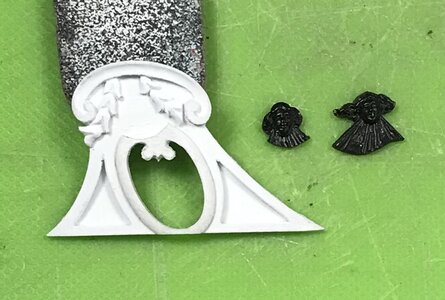
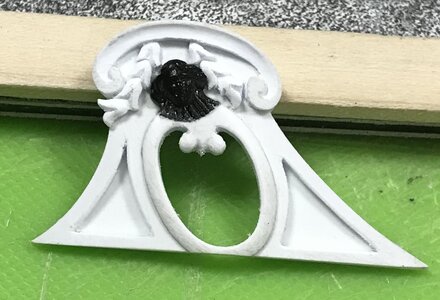
The first layer creates the recess I need to capture the acetate window:
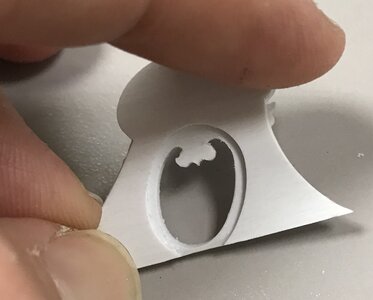
I made up the acetate panes, yesterday, but botched the engraving on one, and will have to remake that.
So, now that I have all of the elements of the amortisement, it was time to see how this was all going to map out on the upper bulwarks.
The whole layout hinges on exact placement of the canopy section. Although the uneven underlying ornament makes it difficult to place these pieces, and the parts have yet to be faired to each other - this placement should enable me to salvage my aft octagonal port:
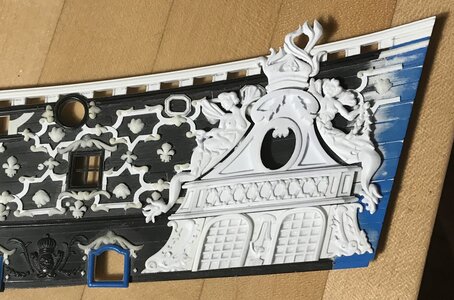
I will have to drop a wing from the forward pixie, but I am now confident that I will be able to make this work.
With my kids back in school, and the uptick in their activities, I have found that I am not sufficiently alert, in the evenings, to do good paint work. All of the putty fills at the bow are nicely faired and I brush-primed all of the raw plastic, but I just haven’t felt like I could give it the focus it requires. Opportunity will present itself in the coming days, though.
As ever, thank you for the likes and for looking in!
This particular photo of Tanneron’s damaged model of L’Agreable is so instructive because it provides so much information about the fabric of his construction, as well as the shaping cues for the upper finishing of the amortisement:

My ambition, always, is to attempt to capture some sense of the magic that makes Tanneron’s models so impressive. Toward that end, it’s a process of layering details with all of the care of execution that one can muster.
As has been my method, the upper finishing is made up of a series of laminations: a base layer of 1/32”, a middle 1/16” layer, and a top layer of 1/32”.
I toyed with the idea of using Bondo fills to fair panel recesses at a continuous depth. I did not think the Bondo would adhere well enough to the plastic to withstand the slight flex of fixing the part in place. Conventional model putty would be too brittle. In the end, I decided that the 1/16” layer was deep enough to create a sense of shape without having to go through undue effort for minimal gain. I think it worked out pretty well.
A montage:

Given my struggles to carve good faces, I decided to extract Louis’s radiant head from the same place on the kit’s stock quarter galleries.
I wasn’t sure, early on, just how much space I would have left-over, after the bellflower garlands were in place, so I left the heads oversized for the time-being.


You can see the subtle shaping of the 1/16” layer, above, as well as the slight rounding of the final window framing.

The garland and cornice were a separate 1/16” layer. Just as they are, above, they would be fine, if I decided to stop there. Attention to detail is everything, though, so I took the shaping a little further:

The garland diminishes, in depth, as it rises to the cornice, and the cornice, itself, is now tapered in a gentle arc from its center to its ends; this small detail helps to accentuate the convex shape of the windowed center, below.
I coved the inner surface of the cornice, modeled the bellflower garlands, and then I gave Louis a haircut. I was able to incorporate just enough of the fanning rays of light, beneath his head, to satisfy the original design:


The first layer creates the recess I need to capture the acetate window:

I made up the acetate panes, yesterday, but botched the engraving on one, and will have to remake that.
So, now that I have all of the elements of the amortisement, it was time to see how this was all going to map out on the upper bulwarks.
The whole layout hinges on exact placement of the canopy section. Although the uneven underlying ornament makes it difficult to place these pieces, and the parts have yet to be faired to each other - this placement should enable me to salvage my aft octagonal port:

I will have to drop a wing from the forward pixie, but I am now confident that I will be able to make this work.
With my kids back in school, and the uptick in their activities, I have found that I am not sufficiently alert, in the evenings, to do good paint work. All of the putty fills at the bow are nicely faired and I brush-primed all of the raw plastic, but I just haven’t felt like I could give it the focus it requires. Opportunity will present itself in the coming days, though.
As ever, thank you for the likes and for looking in!





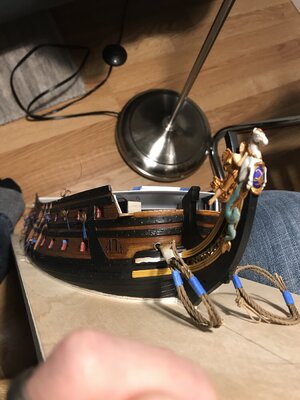
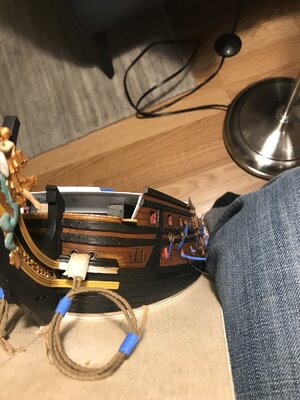
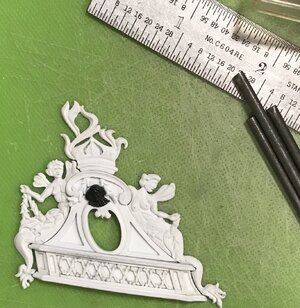
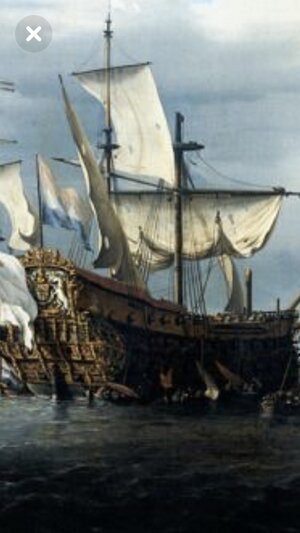
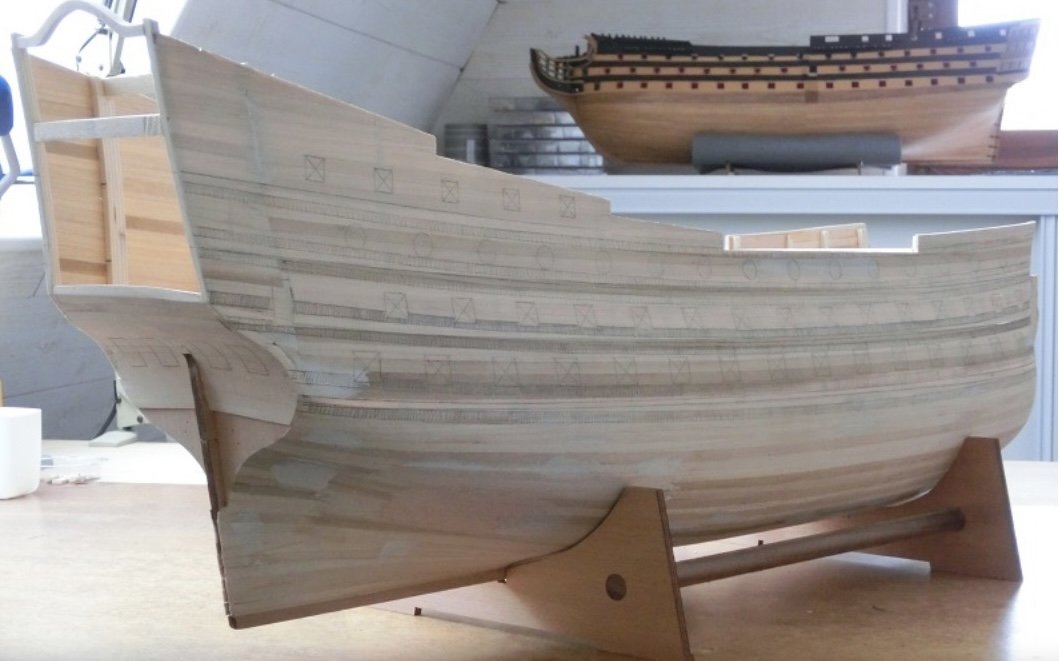


 .
.